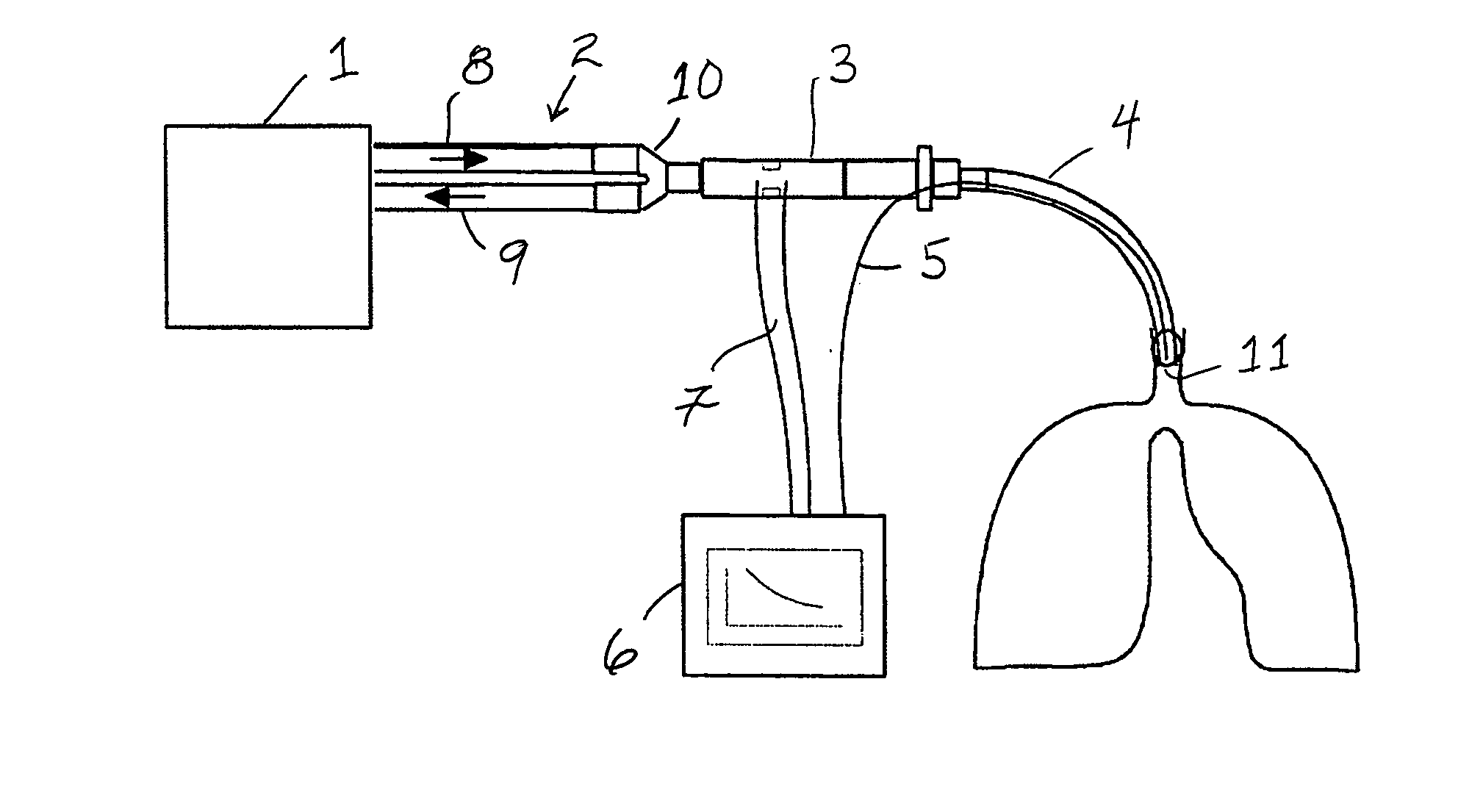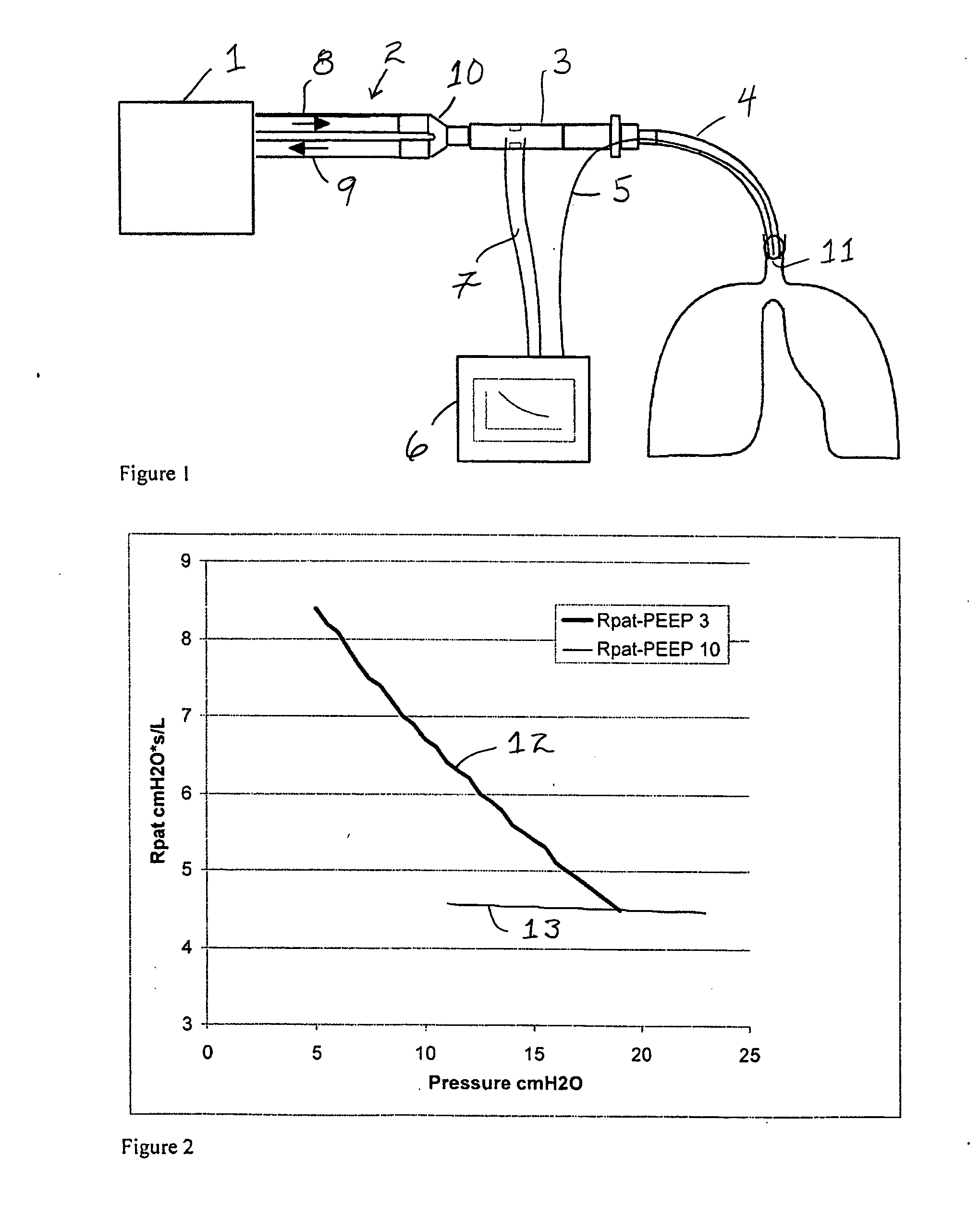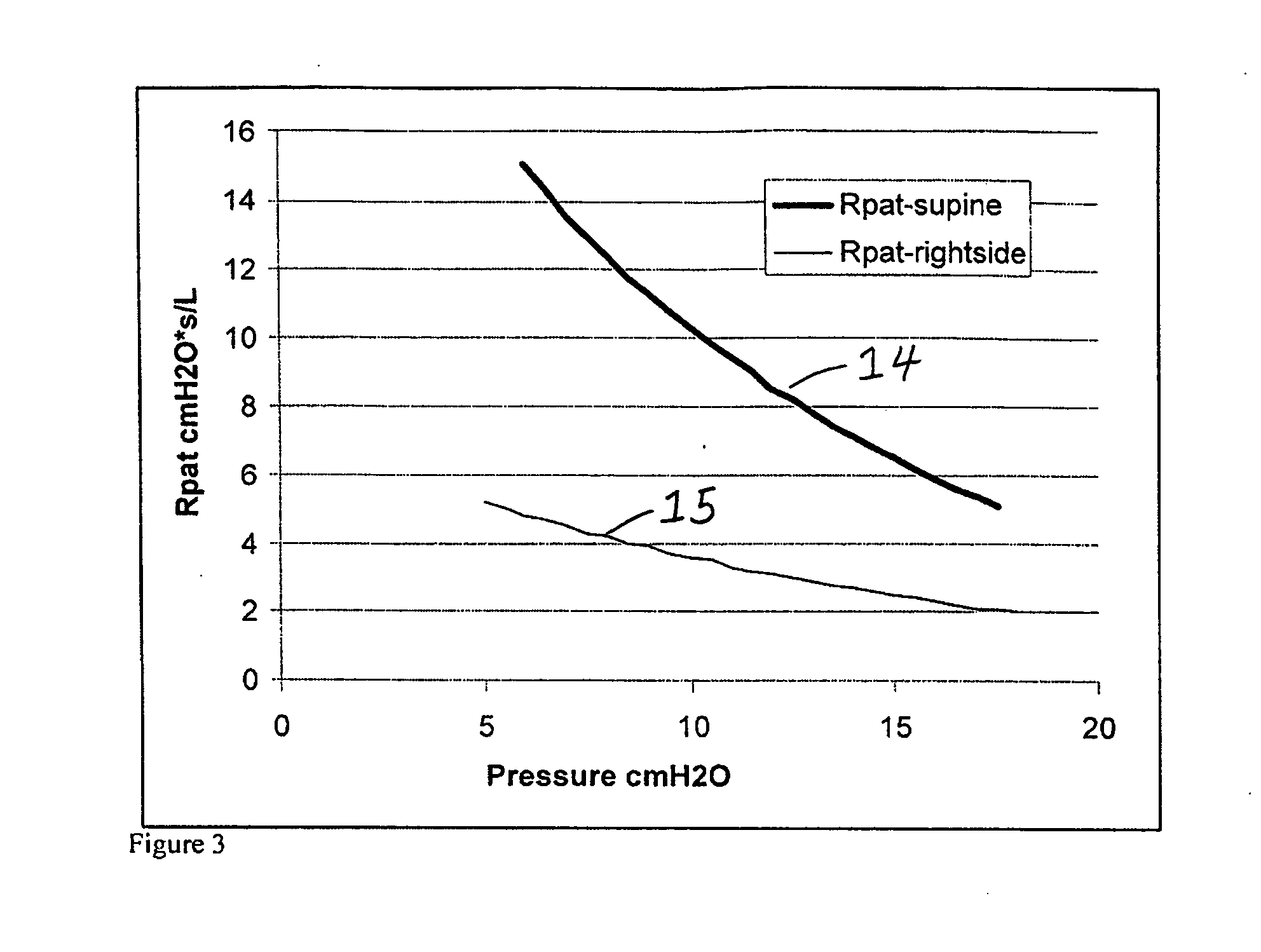Method for monitoring lung collapse
a lung collapse and monitoring technology, applied in the field of monitoring lung collapse, can solve the problems of lung damage, tissue breakage, ventilator-induced lung injury, etc., and achieve the effect of maximizing the volume range, maximizing the elasticity range, and not putting excessive tension on lung tissu
- Summary
- Abstract
- Description
- Claims
- Application Information
AI Technical Summary
Benefits of technology
Problems solved by technology
Method used
Image
Examples
Embodiment Construction
[0015] The invention is applied in connection with artificial breathing. An example setup is presented in FIG. 1. This setup comprises ventilator 1, breathing circuit 2, flow sensor 3, endotracheal tube 4 positioned in patient's trachea, a tracheal pressure sensing system 5, and monitoring equipment 6 receiving the tracheal pressure signal from sensing system 5 and flow sensor signal through flow signal transmission line 7.
[0016] The breathing circuit comprises inspiratory 8 and expiratory 9 limbs and Y-piece 10 connecting the limbs together and directing the gas flow to and from the patient. Flow sensor 3 may be any type of sensor sensitive to gas flow direction and magnitude, like thermal mass flow sensor, pitot-tube, pneumotachograph, or ultrasonic flow sensor. The flow signal transmission line 7 is respectively fitted to carry pneumatic or electrical signals.
[0017] The tracheal pressure measuring system may be a pneumatic or liquid filled catheter to transmit the pressure sign...
PUM
 Login to View More
Login to View More Abstract
Description
Claims
Application Information
 Login to View More
Login to View More - R&D
- Intellectual Property
- Life Sciences
- Materials
- Tech Scout
- Unparalleled Data Quality
- Higher Quality Content
- 60% Fewer Hallucinations
Browse by: Latest US Patents, China's latest patents, Technical Efficacy Thesaurus, Application Domain, Technology Topic, Popular Technical Reports.
© 2025 PatSnap. All rights reserved.Legal|Privacy policy|Modern Slavery Act Transparency Statement|Sitemap|About US| Contact US: help@patsnap.com



